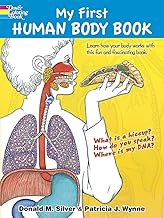SmartPlugs WiFi Outlets SmartPlugs WiFi Outlets
ToneTrek Resistance Loop Bands ToneTrek Resistance Loop Bands SkinSmooth Dermaplaning Tool SkinSmooth Dermaplaning Tool
Shop NowZenBreathe Breathing Trainer ZenBreathe Breathing Trainer GlowUp Facial Steamer GlowUp Facial Steamer
Starting Workout Routines: For Women Who Don’t Normally Exercise If you’ve decided to get fit in the new year then it’s important to know that not all workout routines for women are created equal. We all start at different fitness levels, so if you don’t normally exercise then you may find it harder to get into new routines. For the sake of your health and your motivation, follow these tips to make sure you go about things the right way. Checking With Your Doctor This isn’t always essential, but it could be a good idea to check with your doctor if you haven’t exercised in a long time. This is especially important if you have a chronic health condition or any symptoms that may interfere with physical activity. Even if you are healthy, going for a physical assessment can help you know what level you’re at, and boost your determination to get started. Knowing how fit (or unfit!) you are before you start can be great motivation to continue, and a measure for your future success. Getting The Right Workout Gear If you’re about to start doing workout routines for women then you’re going to want to make sure you have comfortable clothing to work out in. There’s no need to spend a fortune, but you need to make sure that what you do have allows you to move freely. It’s especially important to invest in a good sports bra to protect the breasts, and some good training shoes that will help you to avoid problems with your joints and back. How To Fit Exercise Into Your Daily Routine Workout routines for women who don’t exercise may seem to take up a lot of time – time that you may not have – but the truth is that just about anyone can fit the exercise they need into their daily routine. All you need to do is make sure you get some aerobic activity for at least 10 minutes at a time, preferably a few times a day. This could even include walking to the store, climbing stairs, or doing the gardening. Pushing Through The Obstacles If you don’t normally exercise, then starting new workout routines can often present new challenges. For a start, you’ll find that exercise quickly tires you out. That’s ok – it’s better to exercise for short periods of time (maybe 10 minutes) and do it consistently until you build up. You may also find that your muscles ache, so compensate for this by working out different muscles every day and taking a couple of days off each week. Remember – if you start to feel any serious symptoms it’s important to see a doctor. Workout routines for women who don’t normally exercise will be a challenge, but you can be flexible. Do what you need to do to keep yourself motivated. Every day you’ll find that you can push yourself a little further, and the rewards will soon start to outweigh the pain.
Anthony went to the book store. He wanted to buy a book. He wanted to buy a book about bugs. He liked bugs. He picked up bugs in his yard. He took them to school. He showed the bugs to his teacher. His teacher told him the name of each bug. Then Anthony took the bugs home. He showed them to his parents. His mom told him to take the bugs out of the house. His dad liked to see the bugs. He said Anthony did a good job. He gave Anthony money to buy a book. So Anthony took the money to the book store. He looked for a book with lots of pictures of bugs.
A good family is not measured by family status. but measured by the happiness of living together in the family And a good family will be the foundation for every life in the family to have a strong mind. Have a good life attitude But if the family is not good, parents quarrel every day. They use violence until Chachin speaks rudely and yells at each other. Children in the house remember and use it outside. until it became a social problem. Or the adults in the house themselves will accumulate stress. and came to explode with outsiders until it became a problem Therefore, if we want to keep society safe We have to focus on safety in the family.
Featured Products

ToneTwist Core Trainer ToneTwist Core Trainer
SootheSonic Facial Cleanser SootheSonic Facial Cleanser EcoWash Car Wash Kit EcoWash Car Wash Kit LiftEase Compression Socks LiftEase Compression Socks
View Product
ZenMist Aromatherapy Diffuser ZenMist Aromatherapy Diffuser
ZenMist Aromatherapy Diffuser ZenMist Aromatherapy Diffuser SpinFit Spin Bike SpinFit Spin Bike
View Product
ZenBrew Tea Infuser ZenBrew Tea Infuser
CleanFuel Natural Protein Powder CleanFuel Natural Protein Powder ToneUp Ab Roller ToneUp Ab RollerMuscleMax Massage Gun MuscleMax Massage Gun
View Product